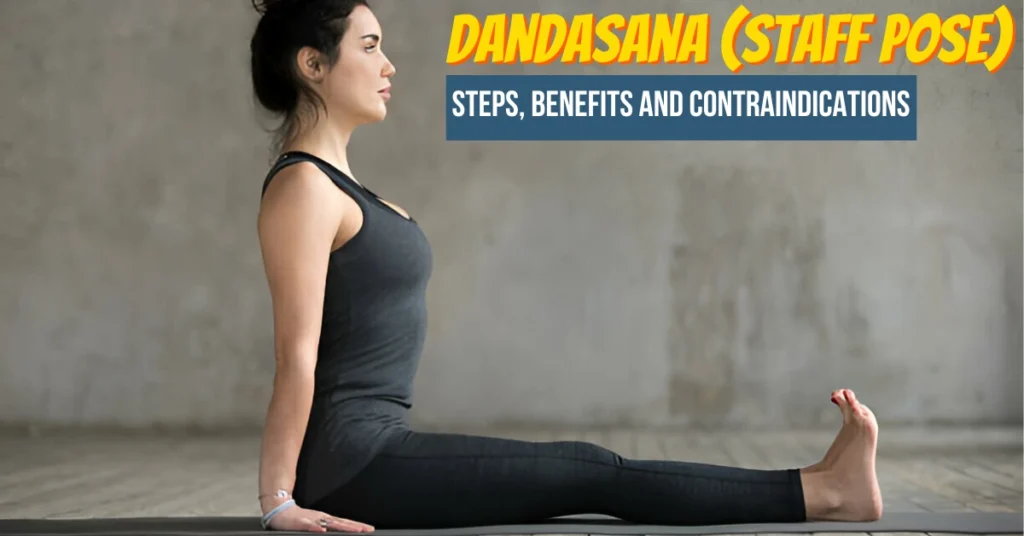Sitting in one place for a long time often leads to restlessness and discomfort. Many people, whether working professionals or students, struggle to sit still without feeling uneasy. Over time, this can affect your meditation practice, your concentration, and even your breathing patterns. But the good news is that yoga has simple solutions for such everyday problems. One such pose is Swastikasana.
Today, Yogaasan is going to cover what Swastikasana is, Swastikasana steps, Swastikasana benefits, and a lot more to help you understand why this calm-looking pose is more powerful than you think.
What is Swastikasana Pose?
When we think about meditative postures, the first image that often comes to mind is someone sitting cross-legged, calm, and steady. That’s exactly the essence of the Swastikasana pose.
In Sanskrit, “Swastika” means “auspicious” or “good fortune,” and “Asana” means “pose.” This posture is simple yet highly significant. It is primarily used for meditation, breathing exercises, and calming the mind. The beauty of Swastikasana lies in its simplicity; there are no complicated twists or bends, just pure, grounded stillness.
Anyone, from beginners to advanced practitioners, can perform this pose without much preparation. It’s time to dive deeper into the advantages and steps!
What are the Benefits of Swastikasana?
While it may appear simple, the Swastikasana benefits are quite impressive. Let’s look at why this basic-looking pose is such a gem:
- Improves Concentration and Focus: Sitting steady without movement trains your mind to become more focused during meditation and pranayama practices.
- Strengthens the Back: Maintaining an upright spine strengthens the back muscles naturally over time.
- Calms the Nervous System: Regular practice relaxes the nervous system, reducing anxiety and stress.
- Aids in Digestion: Sitting in an upright posture encourages better digestion and organ function.
- Opens the Hips and Knees: Gentle stretching of the lower body increases flexibility without strain.
- Balances Energy Flow: Swastikasana is believed to balance the energies in the body, making it ideal for pranayama and mantra chanting.
- Effect of Swastikasana on Liver: An interesting point often overlooked is the effect of Swastikasana on liver health. Sitting upright and opening up the abdomen slightly, it improves blood flow to the abdominal organs, indirectly supporting liver function and overall detoxification.
As you can see, a simple seated posture can unlock so many hidden advantages when practised regularly.
Swastikasana Procedure | How to do Swastikasana
You must be wondering, how exactly do you get into this powerful yet peaceful pose? Let’s break down the steps of Swastikasana easily and clearly:
- Sit on a yoga mat with your legs extended straight out in front of you.
- Fold your left leg and place the sole of your foot against the inner side of your right thigh.
- Fold your right leg and insert the toes into the space between the left calf and thigh.
- Make sure that your knees are touching the ground as much as possible.
- Keep your spine straight, chest open, and shoulders relaxed.
- Rest your palms on your knees in Gyan Mudra (thumb and index finger touching).
- Gently close your eyes and concentrate on your breath.
- Stay in this position for as long as comfortable, starting with 5 minutes and gradually increasing.
Tip: If you feel discomfort in your knees initially, you can use a cushion or a folded blanket under your hips to make the pose easier.
Swastikasana Contraindications You Need to Know About
While Swastikasana is generally safe and simple, it’s important to know when to take caution:
- People with severe knee or hip injuries should avoid sitting in Swastikasana for long periods without proper guidance.
- If you feel any sharp pain or pinching while adjusting the legs, immediately release the pose.
- Individuals with recent lower spine surgeries or chronic sciatica issues should consult a yoga therapist before attempting.
Listening to your body is crucial to ensure a safe and comfortable practice.
Conclusion
After exploring the steps and benefits, it becomes clear that this pose is far more than just a way of sitting. It’s a bridge to inner peace, improved focus, and better health. Adding yoga Swastikasana to your daily routine can lead to profound improvements in your meditation practice and overall mental well-being. Best of all, you don’t need fancy equipment or a special yoga studio to practice it.
At Yogaasan, we always emphasize that true growth in yoga starts with mastering the basics. And Swastikasana is one of those foundational poses that quietly but powerfully sets the stage for bigger transformations. So, the next time you roll out your yoga mat, take a few minutes to settle into Swastikasana, breathe deeply, and let your body and mind find their perfect balance.
Frequently Asked Questions (FAQs)
How many times should I do Swastikasana?
You can practice Swastikasana daily for 5-15 minutes, gradually increasing the time as your comfort grows.
Is Swastikasana good for beginners?
Yes, Swastikasana is a beginner-friendly pose and a great introduction to seated meditation postures.
Can Swastikasana help improve posture?
Absolutely. By encouraging a straight spine, regular practice of Swastikasana naturally improves your sitting posture.





